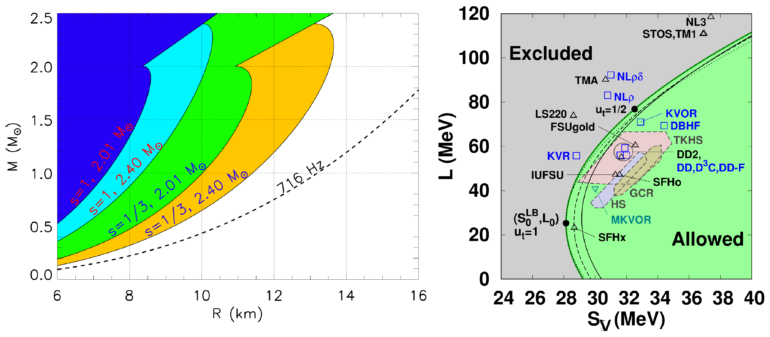Researchers at the Institute of Modern Physics (IMP) of the Chinese Academy of Sciences (CAS) and their collaborators have measured the masses of several key nuclei with high precision by employing the most advanced storage-ring mass spectrometry technique. Using the new data, they investigated X-ray bursts on the surface of a neutron star, setting constraints on the properties of neutron stars from a new perspective. The study was published in Nature Physics.
Neutron stars are considered to be the densest objects after black holes. Type-I X-ray bursts, among the brightest stellar objects frequently observed in the sky by space-based telescopes, are violent thermonuclear explosions occurring on the surfaces of neutron stars.
Due to the strong gravity of a neutron star, hydrogen- and helium-rich matter from a companion star is accreting on the surface of the neutron star for hours or days before igniting thermonuclear burning. The explosion lasts for 10 to 100 seconds, causing a bright X-ray burst. These frequent X-ray bursts offer an opportunity to study the properties of neutron stars.
The bursts are powered by a nuclear reaction sequence known as the rapid proton capture nucleosynthesis process (rp-process), which involves hundreds of exotic neutron-deficient nuclides. Among them, the waiting-point nuclides, including germanium-64, play a decisive role. “Germanium-64, like a crossroad on the path of nuclear reaction processes, is an important congested section encountered when the nuclear reaction proceeds to the medium mass region. The masses of the relevant nuclei are decisive in setting the process path and thereby the X-ray flux produced,” explained Zhou Xu, the first author of this paper and a Ph.D. student at IMP.
Therefore, precision mass measurements of the nuclei around germanium-64 are essential for understanding X-ray bursts and the properties of neutron stars. However, due to the extremely low production yield, it has been very challenging to measure the masses of these short-lived nuclei.
After more than ten years of effort, the researchers from the Storage Ring Nuclear Physics Group at IMP have developed a new ultrasensitive mass spectrometry technique at the Cooler Storage Ring (CSR) of the Heavy Ion Research Facility in Lanzhou (HIRFL), which is called Bρ-defined isochronous mass spectrometry (Bρ-IMS). It quickly and efficiently measures short-lived nuclei with extreme low production yield.
“Our experiment is capable of precisely determining the mass of a single nuclide within a millisecond after its production, and it is essentially background free in the measured spectrum,” said Prof. Wang Meng from IMP.
The researchers precisely measured the masses of arsenic-64, arsenic-65, selenium-66, selenium-67 and germanium-63. The masses of arsenic-64 and selenium-66 are the first experimental results in the world, and the mass precision of the others have all been improved. With the newly measured masses, all nuclear reaction energy related to the waiting point nucleus germanium-64 has been experimentally determined for the first time.
The researchers used the new masses as inputs for X-ray burst model calculations. They found that the new data lead to changes in the rp-process path. As a result, the X-ray burst light curve on the surface of the neutron star has an increased peak luminosity and a prolonged tail duration.
By comparing model calculations with the observed X-ray bursts of GS 1826-24, the researchers found that the distance from Earth to the burster should be increased by 6.5%, and the neutron star surface gravitational redshift coefficient needs to be reduced by 4.8% to match astronomical observations, which indicates that the density of the neutron star is lower than expected. In addition, the composition changes of the rp-process reaction products revealed that the temperature of the outer shell of the neutron star should be higher than generally believed after the X-ray burst.
The property of neutron stars is a frontier physics research topic of great importance. “Through precise nuclear mass measurement, we obtained a more accurate X-ray burst light curve on the surface of the neutron star. By comparing it with astronomical observations, we set constrains on the relationship between the mass and radius of the neutron star from a new perspective,” said Prof. Zhang Yuhu from IMP.
More information:
X. Zhou et al, Mass measurements show slowdown of rapid proton capture process at waiting-point nucleus 64Ge, Nature Physics (2023). DOI: 10.1038/s41567-023-02034-2
Provided by
Chinese Academy of Sciences
Citation:
Precision mass measurements of nuclei reveal properties of neutron star (2023, May 4)



